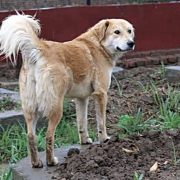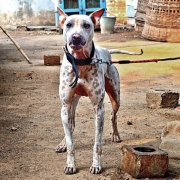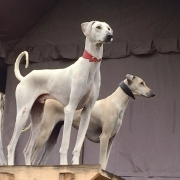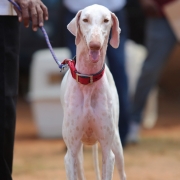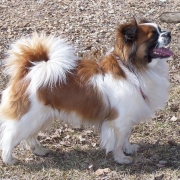
Etcetera
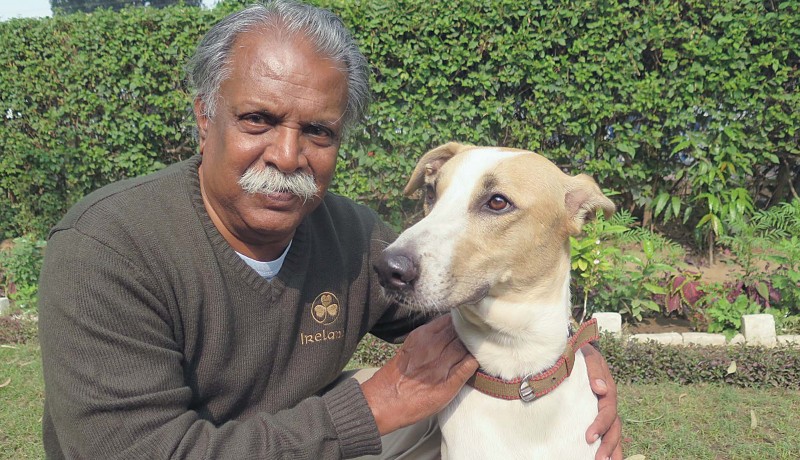
Did you know India still has 25 indigenous canine breeds? S Theodore Baskaran sheds light on a neglected legacy, discovers Jayanthi Somasundaram
Far, very far, from the mundane streets of India’s towns and cities is a canine elite who were once companions to kings and aristocrats. Turning up their snouts at the mere thought of pounding pavements and being petted at street corners, these blue-blooded thoroughbreds—never use the word ‘dog’ around them!—are indigenous to India, and now the subject of a new book.
Titled The Book of Indian Dogs (Aleph; 121 pages; ₹ 399) and penned by Bengaluru-based S Theodore Baskaran, 76, the tome zeroes in on 25 Indian breeds that still exist. Most dog lovers in India bask in the adoration of the loyal and lovable street dog and the more well-heeled foreign breeds such as the Dachshund, Labrador or German Shepherd. So, really, who are these exotic Indian beauties?
Going by local names such as Rajapalyam or Chippiparai, our indigenous canines have been around since ancient times. Their small numbers and hefty price tags mean most of us rarely get to see them. Baskaran classifies them into three categories: working dogs, hounds and companion dogs. “Some breeds, such as the long and sleek Rajapalyam and Mudhol hound, traditionally hunting dogs, are doing very well. The short, bushy Lhasa Apso from Nepal and the Tibetan terrier are flourishing as companion dogs in Europe and America. The Bunny dog of Kutch and Shencotta of Tamil Nadu are rare, and the Rampur hound is on the verge of disappearance,” rues Baskaran, who apart from being a writer is also an art historian and naturalist.
Through his research, Baskaran found that the India’s canine gene pool stayed relatively intact till the colonists arrived on our shores. Indian breeds, which were only able to chase and corner game, were not retrievers and not useful in hunting. So they were crossed with European breeds that had been bred and trained as gun dogs. This resulted in the dilution of bloodlines among truly Indian breeds, with the small Himalayan breeds being the exception, given their tolerance for cold climates, similar to Europe.
The resultant cross-breeding with local thoroughbreds coupled with no effort from our government to preserve our desi canines resulted in many of them being pushed to the verge of disappearance. This was a far cry from a time when Indian pedigrees travelled across the ancient world as far as Egypt and Rome.
To research Indian breeds, Baskaran scoured the country in search of these dogs. “My career in civil service took me to different parts of India. During these travels, if I heard about a breed or saw one, I would make the time to go and see it,” says Baskaran, who has served two terms as trustee of WWF India. To supplement the information he had already collected, he referred to backdated gazettes of the Kennel Club of India and journals of the Bombay Natural History Society (BNHS).
He says that during his study on Indian breeds, he came across a remarkable anecdote. In the 1980s, when the Indian Peace Keeping Force (IPKF) was in Sri Lanka, they had taken 40 European dogs with them. “Some of them contracted tick fever, which called for blood transfusion. Two dogs were brought to the Chennai veterinary college. The vets searched and tested many dogs and found that the Chippiparai was a universal donor. They tracked down two owners who had healthy Chippiparais and these dogs gave blood to many dogs from the IPKF and saved them. These dogs and their owners were even felicitated by the college at a function,” he tells us.
However, finding international recognition for Indian thoroughbreds has been a teeth-pulling exercise. “Despite having records on stone, paper and in pictures, not one Indian pedigree has been recognised as a distinct breed by the Federation Cynologique Internationale, the apex body which governs canine classification,” says Baskaran. Based in Brussels, the body recognises 343 breeds from 80 member countries. “This is unfortunate because, once upon a time, the Indian canine was prized around the world.”
Baskaran’s work to gain recognition for indigenous breeds goes back to his days as chief postmaster-general in Gujarat in 1996, when he initiated the process of immortalising indigenous pedigrees on postage stamps. A decade later, he was finally able to cut through red tape and find the right allies to release four postage stamps featuring the Mudhol hound, Rajapalayam, Rampur hound and Himalayan sheepdog at the inauguration of the annual dog show in Chennai in 2005. And with the release of The Book of Indian Dogs this year, the first book of its kind in 50 years, Baskaran continues his mission of spreading word among a wider audience of the importance of preserving these fascinating, home-grown creatures.
WORKING DOGS
- Bakharwal: A mountain dog originating in the Pir Panjal area of the Hindu Kush and Himalaya. In 2009, it was observed that only a few hundred of these dogs remained.
- Jonangi: This small-sized breed is found in the Godavari basin of Andhra Pradesh. The wrinkles on the face of this loose-skinned dog are distinctive; at one time, they were able to catch crabs and fish and live on them.
HOUNDS
- Chippiparai: Known as the ‘greyhound of south India’, the Chippiparai is a hunting dog. They are aerodynamically designed by nature and make for great chasers. Interestingly, Chippiparai is a small town in Tamil Nadu that seems to have nothing to do with the breed.
- Mudhol hound: In the early 1900s, Raja Maloji Rao Venkatrao Ghorpade of a tiny kingdom called Mudhol (in present-day Karnataka) acquired some greyhounds and crossed them with local hunting dogs in his kennel, thus creating the Mudhol hound.
- Tibetan Spaniel: Smallest of the Himalayan breeds, this dog stands just 25 cm high. As with the Lhasa Apso, this breed was also made available to Indian owners by Tibetan refugees who settled here.
COMPANION DOGS
Photographs courtesy: Aleph Featured in Harmony — Celebrate Age Magazine August 2017
you may also like to read
-
Cracking the longevity code
Small yet impactful choices can be game-changers, writes Srirekha Pillai At 102, there’s no stopping Chandigarh-based Man Kaur, the world’s….
-
Home, not alone
While a regulatory framework is vital for senior-care facilities, the need of the hour is to develop an ecosystem to….
-
Birthday Girl
Published in a special edition to honour Japanese master storyteller Haruki Murakami’s 70th birthday, Birthday Girl (Penguin; Rs 100; 42….
-
A huge treat for music lovers
Published as the revised and updated second edition, Incomparable Sachin Dev Burman (Blue Pencil; Rs. 599; 470 pages) the authoritative….



